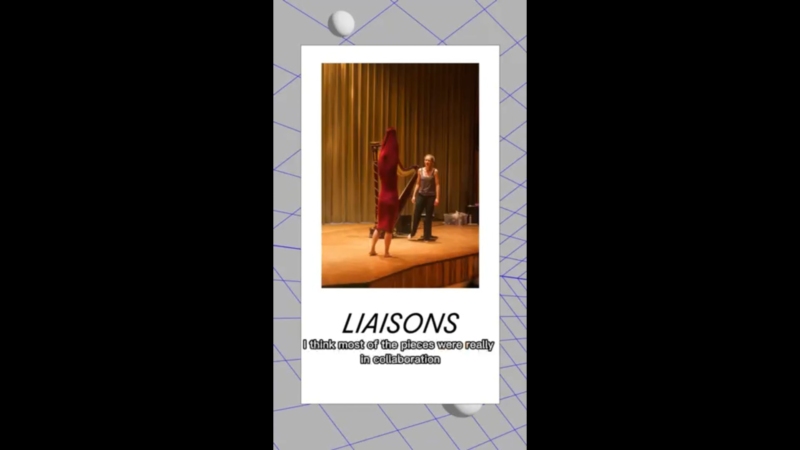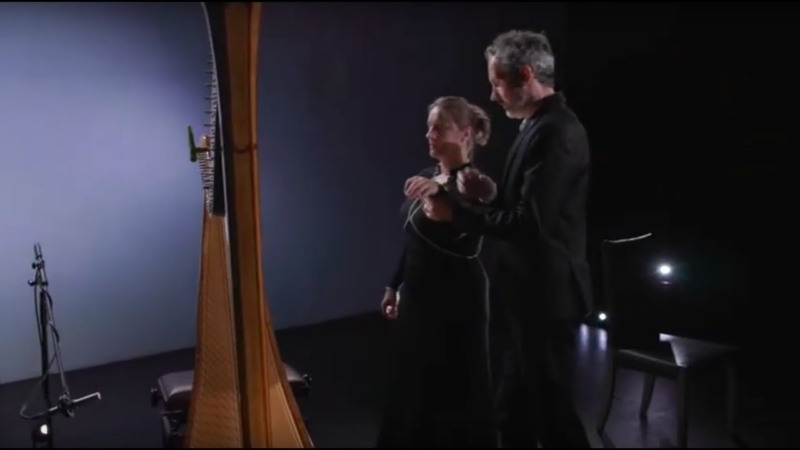READER: LIAISONS
28.07.2025
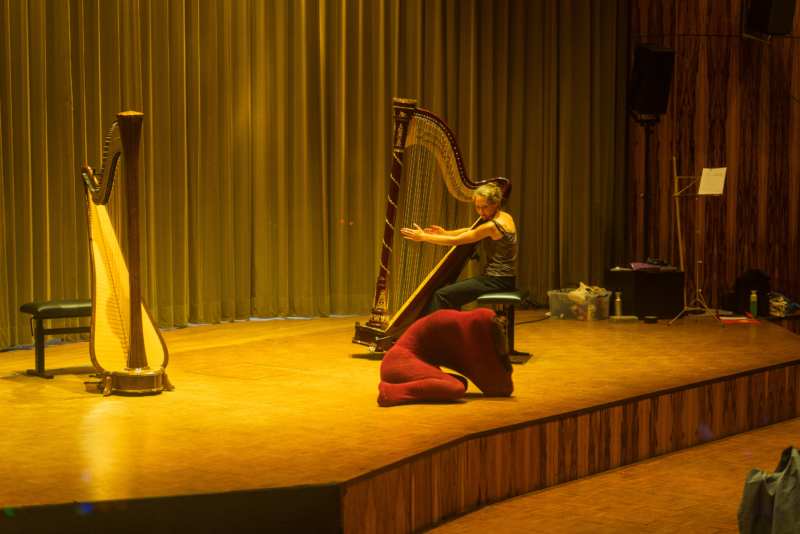
Ward De Jonghe: C (2024)
Georges Aperghis: Fidélité (1983)
Bethan Morgan-Williams: Trying to Use Words (2025)
Thanakarn Schofield: On 2B Thy Heid-Ake (2025)
Ellen Jacobs: MADA (2024)
in a continuous performance of 50′
Jenna Vergeynst (Harp, Voice)
Myrthe Bokelmann (Movement, Performance, Voice)
Supported by the Flemish Government, the City of Ghent and Sabam for Culture
LIAISONS
“Alors tu es vraiment heureux de me voir?” (“So you’re really happy to see me?”) is one of the intriguing phrases in Georges Aperghis’ Fidélité for harp and voice from the early 1980s. In Fidélité, the harpist performs a quasi-psychotic, incomprehensible account of words and syllables mingling with the notes of the harp, a fog of sounds in which only an occasional clear sentence can be discerned. Is it a confession of a passionate murder? Or the account of an obsessional infatuation? Is the other person on stage the subject of her madness, or just the one on whom she projects everything? Who is whose prisoner, or are they both caught in the spin of each other’s fantasies?
All of the four involved composers in this project of the Belgian harpist Jenna Vergeynst, offer a musical response to Fidélité in a new composition. Jenna Vergeynst and dancer/performer Myrthe Bokelmann hooked these five works together into an intimate, haunting performance.
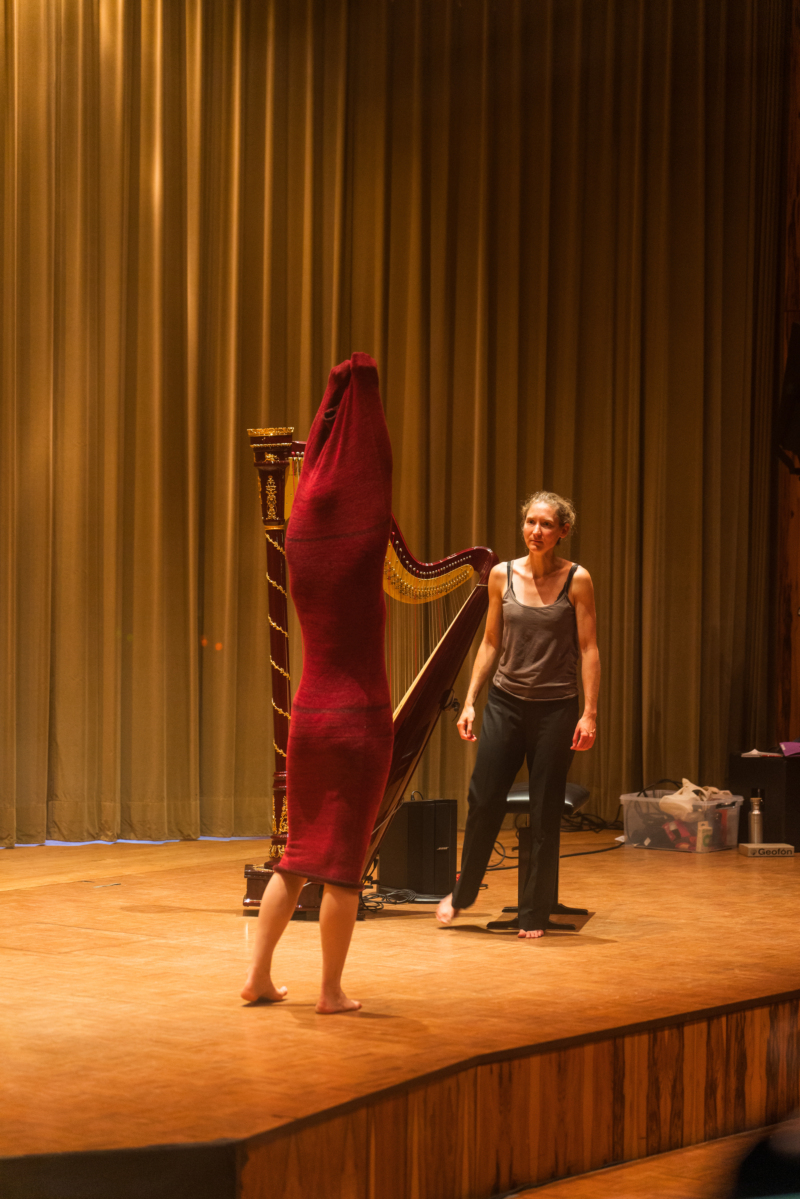
C
The piece for harp, C, is named after a chemical element, like several other pieces of mine (I’m a chemistry teacher during the day). The element carbon – picked by Jenna Vergeynst, the harpist for whom it was composed – has very unique bonding capacities without which none of the known forms of life could ever exist. In this way the piece fits the ‘Liaisons’ project very well on a fundamental level.
In the choreography of Myrthe Bokelmann, we observe a creature coming into being, from discovering its ability to move, struggling for no other reason than existence itself, to a certain self-awareness. That is my interpretation at least.
The music is not written as a depiction of this process, but deals with the consequences of this being alive and self-aware. The score guides the harpist in trajectory towards freedom of choice (it forces to be free, if you will), starting from a classical score and ending with only improvisation guidelines.
As the dancer becomes more and more alive, the musician becomes more and more responsible. The two are inevitably linked.
Ward de Jonghe
FIDÉLITÉ
As in many of Georges Aperghis’ works, the spoken or sung voice and gesture (whether it generates sound or evokes a situation) are closely linked and form an integral part of the composition. In this piece written for Brigitte Sylvestre, the harpist’s gesture, captured in the very act of preparing the sounds, is associated with speech and song. To evoke ‘a moment’ in the life of the female performer, that special interlude when anything could be said, the following are closely linked: the woman’s relationship with her instrument (the joy of being able to play), with music (the performer’s anxiety about the language of sounds) and her own identity in relation to her life as a woman (wife). This triangle forms a world that is tearing itself apart.
Georges Aperghis
TRYING TO USE WORDS
Trying to Use Words is an exploration of interdependence – between voice and instrument, between movement and sound, between expression and failure. Drawing from T. S. Eliot’s East Coker, the piece inhabits the struggle of communication, where each attempt to articulate meaning relies on what has come before and what remains just out of reach. Eliot’s words remind us that the search for meaning is not a solitary act – it is part of a continuum of past and present, of effort and surrender. The performers do not merely coexist; they shape and are shaped by one another, revealing that expression is never singular, but always entangled in the presence of another.
Bethan Morgan-Williams
ON 2B THY HEID-AKE
The piece stages for two female voices and focuses on the context of interrelationship between a primary voice and her alter ego, not as reflection but rather affliction. The primary voice struggles to reject her alter ego, treating it as a symptom of illness – something foreign and unwanted. As the piece unfolds, their relationship becomes intensified, which begins as resistance, gradually turns into total confrontation, until the main voice succumbs and ultimately is absorbed into her alter ego’s identity.
Thanakarn Schofield
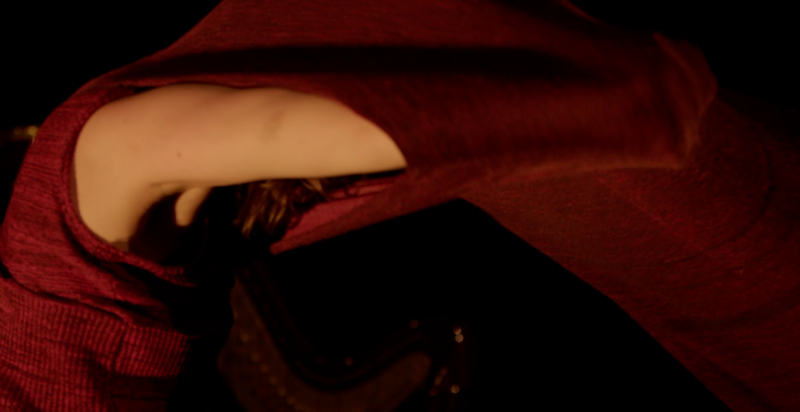
MADA
“Ne parle pas de ton coeur!
Ne parle pas de ton coeur c’est pure vanité!”
Exclaims the performer toward the end of Arperghis’ Fidélité.
MADA, Sanskrit for pride or vanity is, according to the Hindus, part of the six enemies of the mind and heart. When these enemies are too present, it is impossible to open your head and heart and thus speak your mind. In Fidélité, the heart of the person the performer is speaking towards, is full of vanity and there is no way to get through to that person. As a result, the performer experiences many blockages and suppressed feelings.
In MADA the harp gets tangled up in wool and isn’t able to sound freely. During the piece, the harp player tries and succeeds to break free to be able to open up and speak from the heart.
Ellen Jacobs

